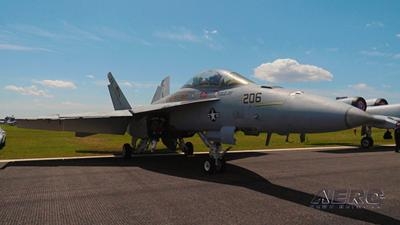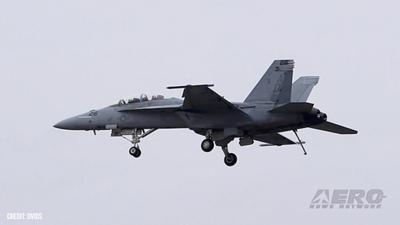Long Live the Super Hornet!
The F-18 Hornet is a great many wondrous and worthwhile things. The twin-engine, all-weather, fourth-generation fighter is fast, maneuverable, tough, battle-proven, eminently upgradable, and a symbol of American Naval airpower. The Hornet is not, however, young.

The Congressional mandate from which the F-18 arose was issued in 1973. In May 1975 the Navy selected the YF-17 prototype, which McDonnell Douglas and Northrop jointly developed into the F-18. In 1977—85 days before the theatrical release of Star Wars—Secretary of the Navy W. Graham Claytor declared America’s newest carrier-based warplane would be known as Hornet.
Forty-five-years later, the F-18 Hornet remains an integral part of the U.S. Navy’s force projection capability. What’s more, compared to the eye-watering, $337-million price tag of a single, USN F-35C, the $34-million legacy Hornet and $67-million Super Hornet are dazzling bargains. Ergo, it behooves the Navy—and the whole of America—to keep the F-18 flying and fighting as long as possible.
To that end, the U.S. Navy has undertaken a Service Life Modification (SLM) program by which it seeks to extend the service life of its aging fleet of F/A-18E-F Super Hornets into the 2040s.

Delays in the development and delivery of the F-35 Lightning II, and unplanned squadron transitions from the legacy Hornet to the F/A-18E-F have compelled the Navy to push its Super Hornets to the full extent of their six-thousand flight-hour design lifespans—about twenty-years in peacetime. Regrettably, the Super Hornet has never known peacetime, and the fleet—over 15-years of constant combat—has racked up flight hours more quickly than anticipated. The first Super Hornet to reach six-thousand flight hours did so in April 2017, just ahead of the aircraft’s 15th birthday.
In 2002—fathoming the severity of the the dilemma it was facing—the Navy’s F/A-18 and EA-18G Program Office (PMA 265) in Patuxent, MD conceived of the Service Life Modification program. Subject program comprises a Service Life Assessment Program (SLAP), which determines whether a given F-18’s airframe can be cost-effectively pushed past its design service life; a Service Life Extension Program (SLEP), which develops life-extending modification kits based upon engineering assessments of individual aircraft; High Flight Hour (HFH) inspections, which ensure the operational safety of a given aircraft to eight-thousand flight hours; and Service Life Extension Authorization (SLEA), which permits individual aircraft to fly up to 7,500 hours before requiring a full SLEP kit.

The SLM process began in 2018 with the arrival of four Super Hornets at a Boeing facility in St. Louis. By 2023, Boeing expected to induct about 50 Super Hornets into the program each year.
The U.S. federal government lacks license rights that would allow a manufacturer other than Boeing to produce the F/A-18E/F aircraft. Therefore, Boeing is the sole repository of the technical knowledge, experience, and tooling requisite the Hornet’s manufacture and sustainment.
That Boeing recently averted a machinists’ strike at its St. Louis defense hub is boon of which both the air framer and the Navy ought both be grateful.
 NTSB Final Report: Rutan Long-EZ
NTSB Final Report: Rutan Long-EZ ANN FAQ: Turn On Post Notifications
ANN FAQ: Turn On Post Notifications Classic Aero-TV: ICAS Perspectives - Advice for New Air Show Performers
Classic Aero-TV: ICAS Perspectives - Advice for New Air Show Performers ANN's Daily Aero-Linx (06.28.25)
ANN's Daily Aero-Linx (06.28.25) Aero-News: Quote of the Day (06.28.25)
Aero-News: Quote of the Day (06.28.25)





